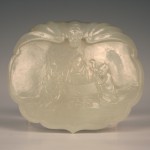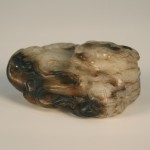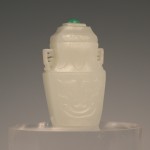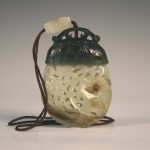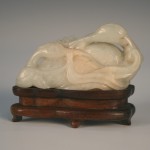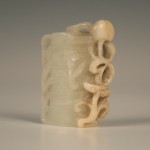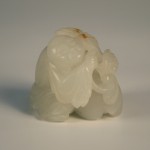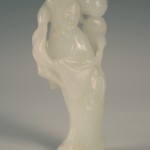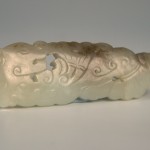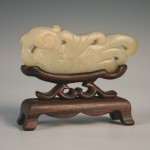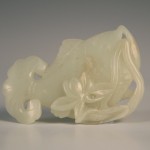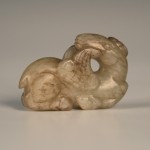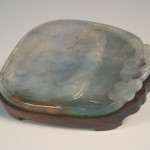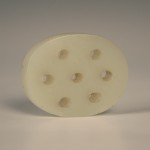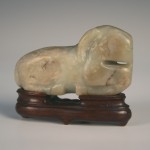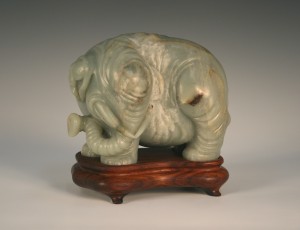
The Chinese jade table screen that sold for £120,000 (featured previously) was one of the more memorable auction prices achieved at our Spring Gardens salerooms last year. Toovey’s Specialist Sales of Oriental Ceramics and Works of Art provided numerous other highlights from objects originating from China and Japan. The first Specialist Oriental Auction of 2012 at Toovey’s (and the first of the Chinese New Year) on Thursday 23rd February includes a collection of mostly 18th and 19th Century jade carvings (Lots 1105 to 1119), consigned from the estate of a lady collector, late of Banbury, Oxfordshire. The consignment includes pendants, vases, carvings, inkstones and plaques. A collection of other jades have also been consigned from other vendors.
Jade is a mineralogically imprecise term for various kinds of hard-stone, more frequently referring to nephrite (a calcium magnesium silicate) and similar jadeite (a sodium-aluminium silicate). The wide-embracing term ‘jade’ can in fact encompass over 150 different varieties of stone. The English term for what in China is called yü (玉) is derived from the Spanish piedra di hijada, or ‘stone of the loins’, as it was believed to be healing to that part of the body. “In ancient times“, said Confucius, the Chinese thinker and social philosopher, “men found the likeness of all excellent qualities in jade. Soft, smooth, and glossy, it appeared to them like benevolence; fine, compact and strong – like intelligence; angular, but not sharp and cutting – like righteousness; hanging down [in beads or pendants] as if it would fall to the ground – like [the humility of] propriety; when struck, yielding a note, clear and prolonged, yet terminating abruptly – like music; its flaws not concealing its beauty; nor its beauty concealing its flaws – like loyalty; with an internal radiance issuing from it on every side – like good faith; bright as a brilliant rainbow – like heaven; exquisite and mysterious, appearing in the hills and streams – like the earth; standing out conspicuously in the symbols of rank – like virtue; esteemed by all under the sky – like the path of truth and duty” [Legge (translator): Li Ki, Book XLV.] Since Neolithic times jade has been of central importance in China. No other stone has had such a continuous relationship with humankind in our social and religious development. Centuries before the Christian era we find it arbitrarily symbolic of Heaven and Earth. It is this representation of virtue and its symbolic history that ranks jade as the most precious of stones amongst the Chinese.
Lot 1105 (illustrated above), to be offered for sale as part of the collection in the February auction, is carved from a stone of celedon green tone. The elephant is symbolic of prudence, strength and wisdom and has always been sacred to Buddhism, this 15cm long carving carries a pre-sale estimate of £1000-1500. Many of the carvings offered in the February auction are of auspicious animals, chosen for their specific symbolic meanings. The Banbury collection to be offered in Toovey’s February Specialist Sale includes Chinese works of art decorated with the ram (a symbol of kindness and patience), fish (symbols of rank and power and later, the symbol of marital bliss), Buddhistic lions (often placed at the entrance of religious buildings, and associated with upholding the law), cranes (endowed with many mythical attributes and considered the aerial courser of the immortals), deer and Lingzhi fungus (both symbols of longevity).
Further images of jade carvings included in the collection:
(Please click on an image for description and full-view, click again for further magnification)
